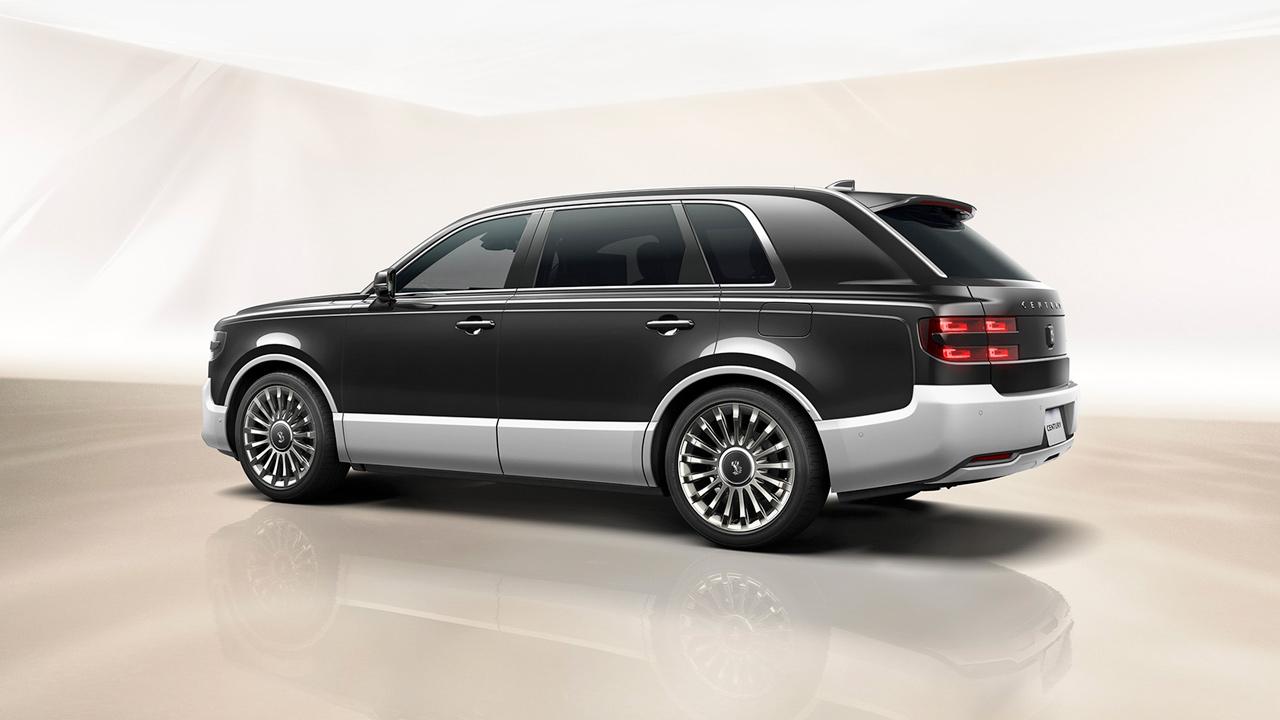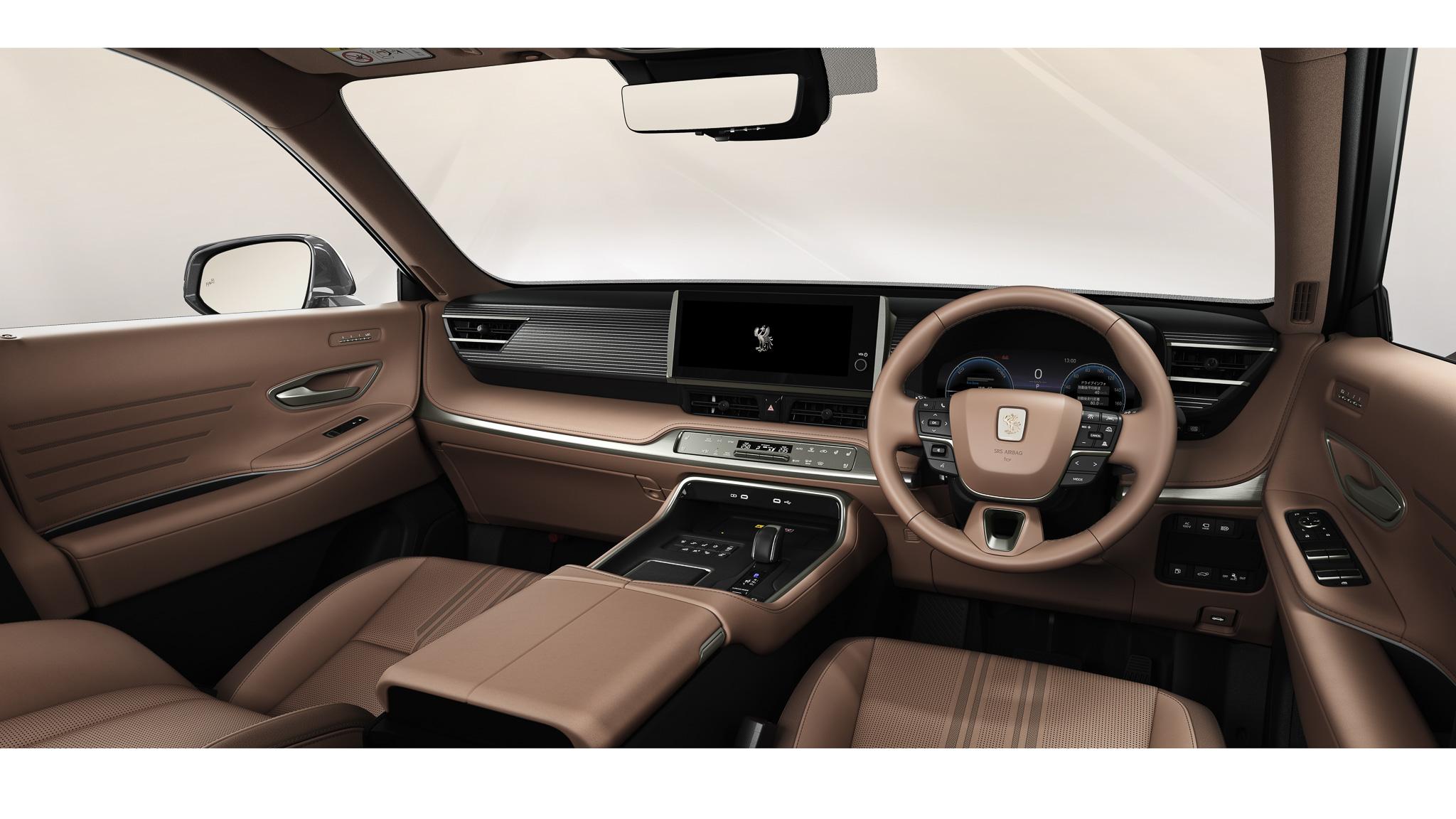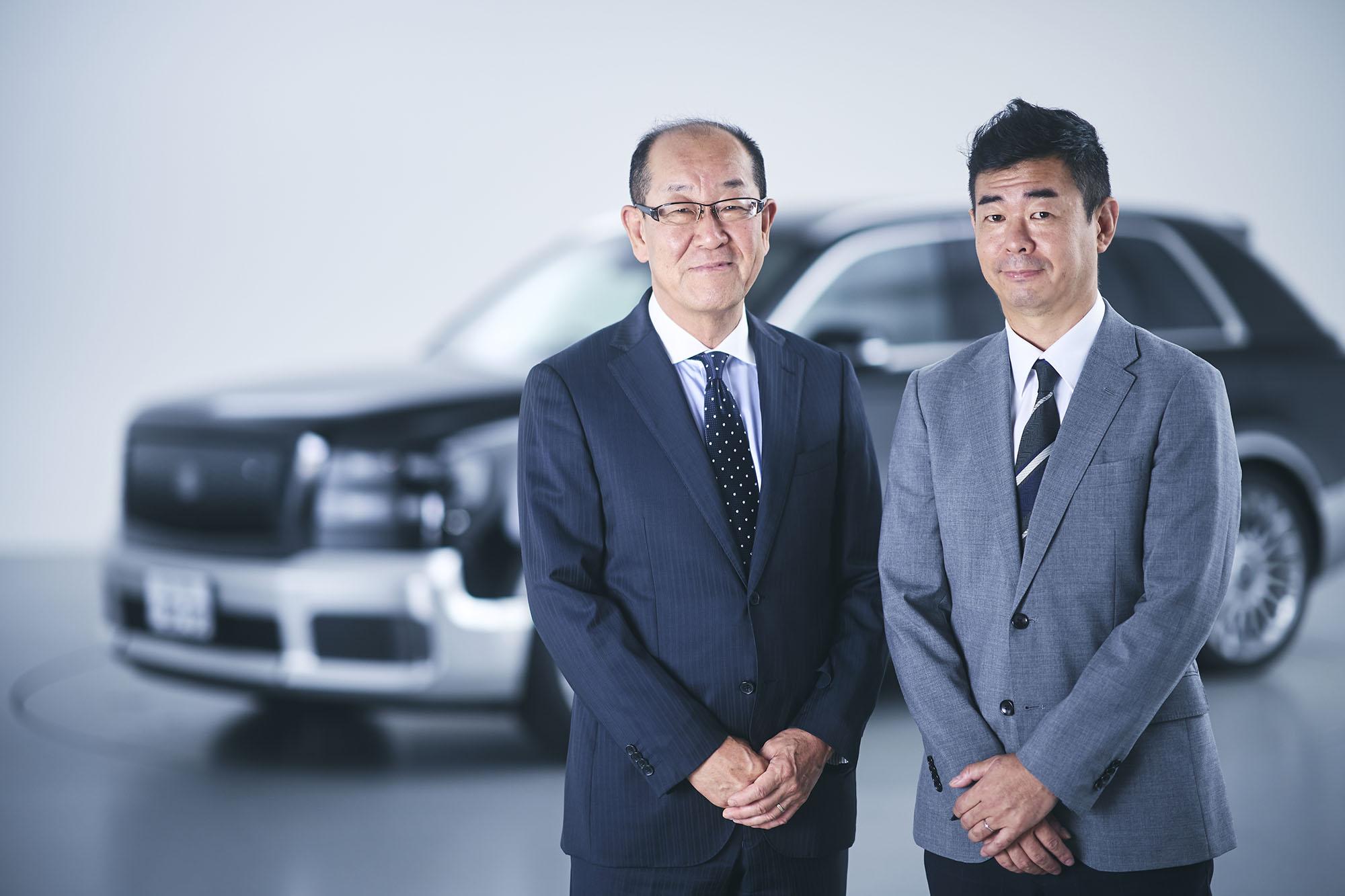
The new Century's chief engineer and chief designer continue to share the inside story of development, delving deeper into the model's "inheritance and evolution."
Giving form to “80% chauffeur, 20% driver”
In keeping with the Century tradition, Tanaka is proud of drawing on every available technology to ensure a quiet, comfortable ride befitting a chauffeur-driven car.
Take for example, the body structure. Minivans, SUVs, and other hatchback-type vehicles with integrated passenger and cargo spaces and large trunk openings are generally compared unfavorably to sedans in terms of ride comfort and quietness.
This is because it is harder to achieve the body rigidity (strength) that is fundamental for ride comfort and driving performance, and to keep out road noise produced by the tires.

Tanaka
Though the new Century may look like a hatchback, structurally the body is actually close to that of a sedan, with an interior glass and frame structure serving as a partition between the rear seats and the cargo space.
This makes for a more rigid body, resulting in a quieter, smoother ride. The interior glass also minimizes noise seeping in from the road surface and cargo space.
We also didn’t want to have VIP passengers riding in the same space as their luggage, or for the interior temperature to be affected when that luggage is being loaded in or out. In that sense, the partition was absolutely essential if this car was to bear the Century name.
As Tanaka tells, the high body rigidity of a sedan-style structure was also crucial in realizing the advice of Chairman Akio Toyoda (then president) to aim for “80% chauffeur, 20% driver.”

Tanaka
With that strong body as a foundation, we created a car with outstanding performance, including smooth suspension and a dynamic PHEV power unit.
The car is also very fun to drive, and as chief engineer, I am confident that owners will find a great deal of enjoyment in jumping behind the wheel themselves.
Sonoda
With this mid-brown interior color palette, for instance, the steering wheel is also coordinated to match.
This is just one example of how we sought to satisfy owner-drivers in the design.
Gratitude for all involved
With the new Century’s development now behind them, Tanaka and Sonoda both say they have nothing but gratitude for everyone who worked on the project, including outside partners.
Tanaka
Creating a Century means making no compromises. It entails difficult challenges.
Earlier, Sonoda mentioned how ideas from the production engineering side enabled us to realize some ambitious designs, such as the character line on the A-pillars and the acrylic grille. There were many such cases in this project.
As part of Toyota’s “human-centered” philosophy, we believe that a car’s overall appeal is greatly shaped by how much everyone involved considers the customer and contributes their abilities to the development process.
For that reason, I want to thank everyone who worked on the new Century.
Sonoda
In the past, there were a lot of boundaries between the divisions handling development, design, and production. Today, these walls no longer exist.
This project made me realize that we are united by the shared desire to create something truly great together.
Akio has been urging colleagues to make ever-better cars since his days as executive vice president. If the new Century’s development genba is any indication, these simple words have come to capture the imaginations of those involved in carmaking.


